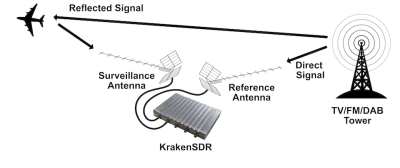Lots of space news this week, with the big story being that Artemis I finally blasted off for its trip to the Moon. It was a spectacular night launch, with the SLS sending the crew-rated but vacant — well, mostly vacant — Orion spacecraft on a week-ish long trip to the Moon, before spending a couple of weeks testing out a distant retrograde orbit. The mission is already returning some stunning images, and the main mission goal is to check out the Orion spacecraft and everything needed for a crewed Artemis II lunar flyby sometime in 2024. If that goes well, Artemis III will head up in 2025 with a crew of four to put the first bootprints on the Moon in over 50 years.
Of course, like the Apollo missions before it, a big part of the crewed landings of the Artemis program will likely be the collection and return of more lunar rock and soil samples. But NASA likes to hedge its bets, which is perhaps why they’ve announced an agreement to purchase lunar regolith samples from the first private company to send a lander to the Moon. The Japanese start-up behind this effort is called ispace, and they’ve been issued a license by the Japanese government to transfer samples collected by its HAKUTO-R lander to NASA. Or rather, samples collected on the lander — the contract is for NASA to take possession of whatever regolith accumulates on the HAKUTO-R’s landing pads. And it’s not like ispace is going to return the samples — the lander isn’t designed to ever leave the lunar surface. The whole thing is symbolic of the future of space commerce, which is probably why NASA is only paying $5,000 for the dirt.



 There’s RF emissions floating around you in the air, unless you’re at sea or in the desert. Whether it’s airplane transponders, cell towers, or a crappy switch-mode PSU, the radiowaves emitted interact with objects all around you. If you have multiple receivers with directional antennas, you can catch waves being reflected from some object, compare the wave reflected wave to the wave received from the initial source, and determine the object’s properties like location and speed. If you’d like to know more, IEEE Spectrum has
There’s RF emissions floating around you in the air, unless you’re at sea or in the desert. Whether it’s airplane transponders, cell towers, or a crappy switch-mode PSU, the radiowaves emitted interact with objects all around you. If you have multiple receivers with directional antennas, you can catch waves being reflected from some object, compare the wave reflected wave to the wave received from the initial source, and determine the object’s properties like location and speed. If you’d like to know more, IEEE Spectrum has 








